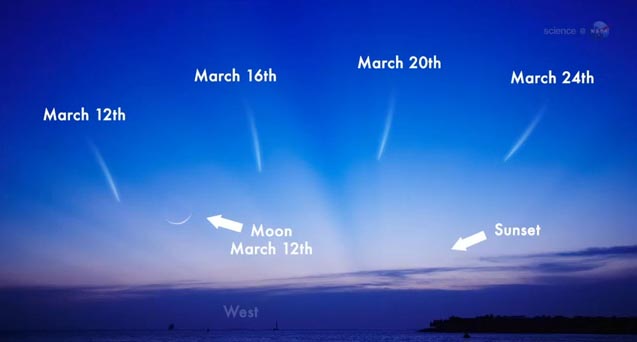Warm rays of sunshine are a welcome sight in the morning. They warm the soil in the garden, help plants make energy through photosynthesis and provide light for solar energy. Earth is at the perfect location in the solar system to benefit from the sun’s life-giving light, heat and energy–approximately 93 million miles from the sun.
Light from the sun isn’t created because the sun is burning like a campfire, but instead because of nuclear fusion. Nuclear fusion is when one proton smashes into another proton so violently that they stick together and release energy in the process.
As a star, the sun is composed of gas–primarily hydrogen and helium. At the sun’s core, nuclear fusion converts hydrogen to helium which generates energy in the form of gamma rays (the highest frequency and shortest wavelength of the electromagnetic spectrum) and heat (the sun’s core temperature is more than 28 million degrees Fahrenheit). Each gamma ray photon has a long journey before it reaches Earth (a photon is a unit of light or electromagnetic radiation).
The sun is so dense that it takes hundreds of thousands to millions of years for one photon to travel to the surface of the sun, which is no small journey at nearly half a million miles. During that journey, the photon loses so much energy bumping into other photons that it emerges as visible light. The last 93 million miles to Earth is then covered in a flash–only eight minutes. I find it hard to comprehend that the light shining in my window right now may have been created a million years ago by two hydrogen protons smashing into each other.
The sun’s heat takes longer to reach Earth and doesn’t come from the core. Instead, the heat we receive originates in the corona, part of the sun’s atmosphere that is only visible during a solar eclipse. The corona extends all the way to Earth and beyond, thinning as it goes. Solar winds carry the heat and charged particles from the corona outward into the solar system at an incredible 280 miles per second. These charged particles are the ones that penetrate the Earth’s protective magnetosphere and help create the northern lights.
Unlike Earth’s atmosphere where the temperature decreases as distance from the surface increases, the sun’s atmosphere actually becomes hotter for a distance. At the sun’s surface (called the photosphere), the temperature is nearly 10,000 degrees Fahrenheit. Above the photosphere is a 1,500-mile-thick band of plasma called the chromosphere that can reach nearly 180,000 degrees Fahrenheit. Beyond the chromosphere is the corona which can reach temperatures of nearly 1.8 million degrees Fahrenheit. These hot temperatures are not because of nuclear fusion like in the sun’s core but instead they are created by gas expansion and magnetic field lines being spliced and releasing energy in the form of heat.
The sun is a complex system of plasma, magnetic fields and nuclear fusion reactions that can boggle the mind. However, we can enjoy two solar events this summer that have fascinated humankind for centuries–a solar eclipse and the transit of Venus across the sun. The solar eclipse occurred on May 20 when the moon aligned perfectly between Earth and the sun. The transit of Venus will occur on June 5 and this will be the last chance to see this phenomenon in your lifetime–the next one occurs in 2117. Check out Venus’s transit by looking through a welder’s helmet (not for too long) between 3:09 p.m. Pacific Time and sunset.






Very interesting facts. Thanks for sharing! I simply love the sun, all sun-related information.